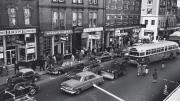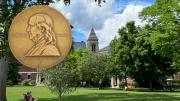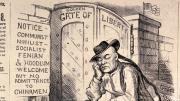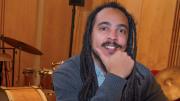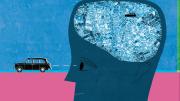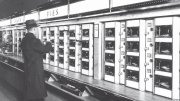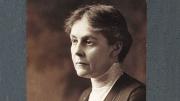The Big Myth, by Naomi Oreskes, Lea professor of the history of science, and Erik M. Conway (Bloomsbury, $32). Having documented industry-funded campaigns to obscure the science explicating climate change and the link between smoking and lung cancer, the authors take on a bigger challenge, summarized in the subtitle: “How American business taught us to loathe government and love the free market.” Given deep strains in American culture and politics, of course, that might not always have been a very hard sell—but the consequences are substantial for today’s politics and society.
God the Bestseller: How One Editor Transformed American Religion a Book at a Time, by Stephen Prothero, Ph.D. ’90 (HarperOne, $29.95). Boston University’s Russell professor of religion examines the life and work of Eugene Exman, who made Harper the leading publisher of religious books in the United States, publishing authors ranging from Dorothy Day to Albert Schweitzer and Martin Luther King Jr.—along the way, pursuing his own spiritual quest in a nation of plural faiths and diminishing denominational boundaries.
The Translations of Seamus Heaney, edited by Marco Sonzogni (Farrar, Straus and Giroux, $50). The late Nobel laureate and Boylston professor of rhetoric and oratory (profiled in these pages in November-December 2006) created his own immortal poetry, but also translated 101 texts from 14 languages, ranging from single poems to Beowulf (reviewed March-April 2000) and The Burial at Thebes, by Sophocles. Collecting them in this volume is an immense service to scholars and readers alike.
Unwired: Gaining Control over Addictive Technologies, by Gaia Bernstein, LL.M. ’00 (Cambridge University Press, $24.95). The author, professor of technology, privacy, and policy at Seton Hall’s law school, doubts that addicted users of contemporary devices can will themselves out of their habits. Instead, she argues, regulatory intervention of the supplying corporations will be necessary—as has been the case for tobacco, foods, and other objects of rampant consumption.
Harvard Square: A Love Story, by Catherine J. Turco ’99. M.B.A. ’03, Ph.D. ’11 (Columbia, $27.95). Combining her lifelong personal experience with the Square (and her perspective as an economic sociologist: she’s Koerner professor of entrepreneurship at MIT’s Sloan School), Turco takes a deep dive into what it is that makes a Main Street or community center special to its denizens. Her historically informed account will certainly resonate with those with fond memories of the Square’s past iterations. It can seem elegiac now given the tourist boom of the 2010s, the generational closing of many family-owned businesses and their replacement with chain stores and bank branches, the effects of the pandemic, and the increasing focus on new centers like that established in Kendall Square or, perhaps, being born in Allston. Turco’s significant work might usefully stimulate action before the current transformation turns irrevocably dark.
The Socialist Patriot: George Orwell and War, by Peter Stansky, Ph.D. ’61 (Stanford, $14 paper). Stansky, now emeritus at Stanford, read Nineteen Eighty-Four the year it was published, when he was a senior in high school, and has engaged with its author ever since. Here, Stansky probes the four great conflicts that shaped Orwell’s thinking as a socialist and a patriot. “He made writing about politics and other subjects into an art,” Stansky concludes, “and left us one of the most glorious intellectual and literary legacies of the modern age”—enduringly so, as that age appears increasingly Orwellian.
The New China Playbook: Beyond Socialism and Capitalism, by Keyu Jin ’04, Ph.D. ’09 (Viking, $30). As the United States and the People’s Republic engage in ever more intense economic rivalry, the author, associate professor of economics at the London School of Economics, counsels that China’s economic system is widely misunderstood in the West: a serious flaw for any ultimately successful policymaking. “Consumers, entrepreneurs, and the state: in China none of them behaves like a conventional economic agent,” she observes. Nothing in the U.S. compares to China’s powerful political centralization, state-owned enterprises, or industrial policy. A timely and lucid guide.
A Madman’s Will: John Randolph, Four Hundred Slaves, and the Mirage of Freedom, by Gregory May, J.D. ’78 (Liveright, $30). The will of Randolph, of Roanoke, a champion of slavery, emancipated nearly 400 enslaved people in 1846. End of story? Not at all. Their attempt to settle land in Ohio promised to them (the largest migration of African Americans to a free state before the Civil War) and the ensuing reactions tell a great deal about the country’s self-perceptions about race and a diverse society in the decades before the battles and bloodshed began. Manumission, the author notes, “changed almost nothing”: it was an exercise of the giver’s rights and accordingly “gave the recipient no more than the law and social mores were prepared to concede”—a larger lesson that very much lingers in twenty-first-century America.
Advanced Parenting, by Kelly Fradin ’06 (Balance/Grand Central Publishing, $29). An empathetic, accessible pediatrician advises on “helping kids through diagnoses, differences, and mental health challenges” (from the subtitle). Her starting point is to shift definitions from children’s “problems” in need of “fixing” to an approach informed by living and thriving “with the diagnosis,” whatever it may be. Hence her determination to identify and take on challenges. A practical, humane book, concluding with the admonition that “empathy is the most advanced parenting skill of all.”
Technology’s Child, by Katie Davis, Ed.M. ’02, Ed.M. ’09, Ph.D. ’11 (MIT, $29.95). As Fradin (above) advises on parenting, Davis, associate professor at the University of Washington Information School, examines the role of digital media in the stages of growing up. By synching steps such as developing executive function and emerging literacy with associated use of technology, she helps explain their interaction—and, crucially, what she calls “design” considerations that should guide caring and concerned parents and others. Finally, she reassures, “being a good enough digital parent is…good enough.”
Art’s Properties, by David Joselit, Porter professor of art, film, and visual studies(Princeton, $27.95). A fierce critique of the commodification of art, along with much else in life, during the past few centuries. The author, chair of Harvard’s department, bracingly begins with what it means when museums have been reduced to photo opportunities: “stage sets for the auto-performance of selfies.” Those longing to recapture the aesthetic and other meanings of encounters with art may agree, or struggle, with his formulation of the road forward: “Dis-possession can be liberating only if it constitutes an exit from possessive individualism.”
So You Want to Work in a Museum? by Tara Young ’96 (Rowman & Littlefield, $25, paper). For those who just want to be in museums, on the other hand, a professional in the field provides a nuts-and-bolts guide. It’s not just for curators or connoisseurs, by the way: Young, a lecturer in museum studies at Tufts, is clear-eyed about jobs in conservation, communications, development, and administration—in all kinds and sizes of museums.
Where Paralytics Walk and the Blind See, by Mary Dunn, J.D. ’01, M.T.S. ’02, Ph.D. ’08 (Princeton, $29.95). An associate professor of theological studies at Saint Louis University examines early modern Catholic Canada under French rule for accounts of sickness, infirmity, and miraculous healing. One need not be interested in the history of Jesuit thought to find a perspective different from the modern biomedical paradigm useful when confronted with illness, disability, and the default of contemporary doctoring.
Wealth, Cost, and Price in American Higher Education: A Brief History, by Bruce Kimball, M.Div. ’78, Ed.D. ’81, with Sarah M. Iler (Johns Hopkins, $49.95). The emeritus Academy Professor at Ohio State suggests that competition begun at least 150 years ago impelled institutions of higher education to steadily increase their production costs (and their prestige) to lure students and faculty members. The resulting spiral of rising revenues, wealth, and expenses has resulted in different tiers of schools, and rising tuition bills and student debt. In turn, real concerns about educational equity and social mobility now pose increasingly sharp political problems for higher education generally.
The Autumn Ghost, by Hannah Wunsch ’97 (Greystone, $29.95). Those ventilators and ICUs that figured so prominently in the early, most rampant phases of the COVID-19 pandemic? Wunsch, a critical-care physician, researcher, and anesthesiology professor at the University of Toronto, traces their invention to another viral epidemic—polio, in 1952 in Copenhagen—and to the doctors and students “who set aside their own lives to help patients breathe.” Their story of “a convergence of coincidences, experience, and knowledge from disparate medical fields” transformed medicine in life-saving ways. Whether similar progress will result from 2020-2023 remains to be seen.
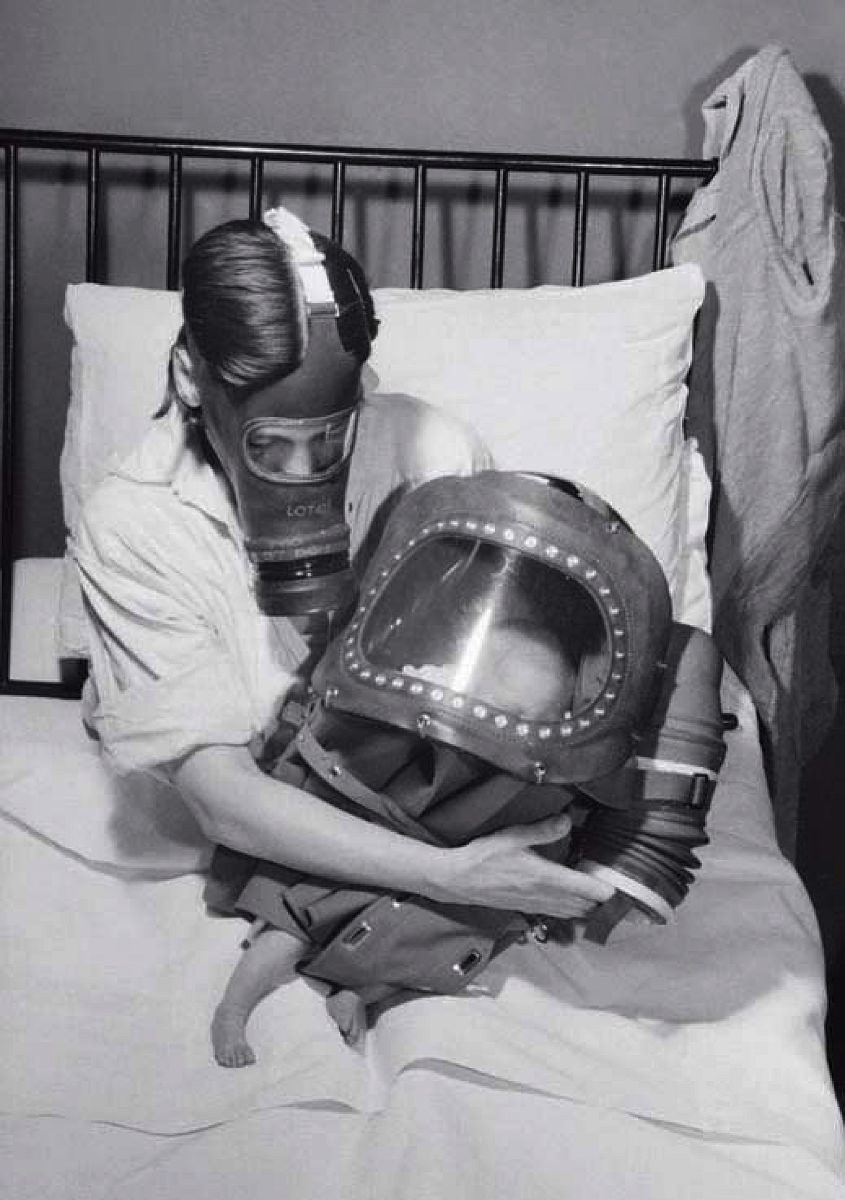
Holding their breath, literally: fearing poison gas in 1941, a mother wearing a civilian respirator cradles her newborn (encased in a baby gas helmet, which buckles underneath) and uses the bellows on the right to pump air for the baby.
Photograph courtesy of Imperial War Museum/Ministry of Information Second World War Official Collection/D3918
Holding Their Breath, by M. Girard Dorsey, J.D. ’97 (Cornell, $49.95). Between the horrors of poison-gassing in World War I and the U.S. decision to use atomic bombs in 1945, the Allied forces analyzed the risks of being attacked by—or themselves using—chemical weapons during World War II. The author, who is a military and medical historian at the University of New Hampshire, relates how the United States, Canada, and Britain thought about the weapons’ potential use, rather than ruling it out—but ultimately controlled their deployment.
Marse, by H. D. Kirkpatrick ’70 (Prometheus, $27.95). Having discovered in 2014 that his paternal ancestors were slaveholders, the author, a psychologist, essays a psychological portrait of slave masters and their white supremacist worldview in the decades immediately before the Civil War. He is, unfortunately, able to project those mental constructs forward, to contemporary American political leaders and others.
